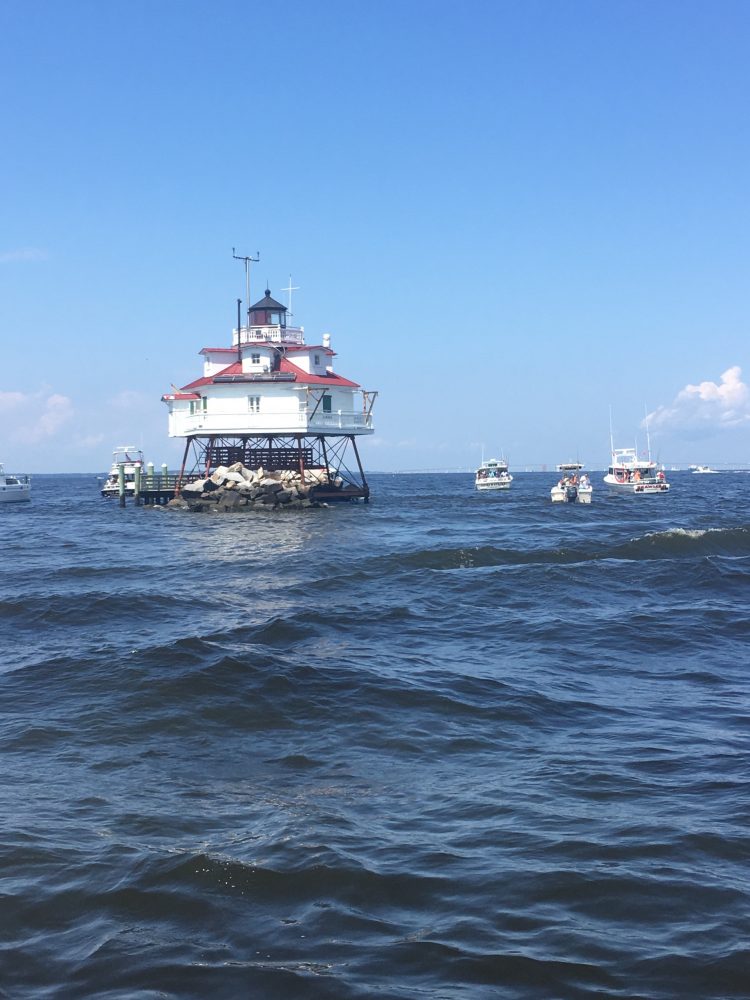The health of the Chesapeake Bay is dependent on the cooperation of six states and the District of Columbia, making it difficult to consistently tackle pollution across the estuary.
New York, Pennsylvania, West Virginia, Maryland, Delaware and Virginia all contribute to the health of the Bay.
In September, the Chesapeake Bay Foundation sued the Environmental Protection Agency claiming that the agency has not held New York and Pennsylvania accountable for helping to clean up the Chesapeake Bay through the U.S. Clean Water Act. The lawsuit is progressing through the federal court system.
These upper states have a major effect on the Chesapeake Bay because the Susquehanna River, which flows through New York and Pennsylvania, provides half of the Bay’s fresh water, according to the USDA.
Water quality and underwater grasses, both vital to the health of the Bay, have declined in a recent report from the Chesapeake Bay Program, released on April 6.
According to the report, only 38% of the Chesapeake Bay met water quality standards from 2016 to 2018, a 4 percentage point decrease from 2015 to 2017 measurements.
The report also noted a 33% decrease in underwater grasses, from 99,511 acres observed in 2018 to 66,684 acres in 2019.
Blue crab population remains stable and oyster numbers increased in 2020, but are still far from reaching a healthy level, according to the Chesapeake Bay Foundation’s State of the Bay report.
Fish suffered in 2020. Both rockfish and shad populations were recorded far below below sustainable levels, according to the report.
The Chesapeake Bay is experiencing effects from heavy rainfall in 2018 and the beginning of 2019, which washed down pollution from upstream states, such as New York and Pennsylvania, said Rachel Felver, communications director of the Chesapeake Bay Program.
For many years, the estuary has received nitrogen and phosphorus pollution from landscape runoff. Too much nutrient fertilizer spurs algae blooms, causing low oxygen levels and killing fish, said Doug Myers, senior Maryland scientist at the Chesapeake Bay Foundation.
Storm runoff has become a major issue because there are more frequent storms and water is getting warmer due to climate change, both of which exacerbate this nutrient loading, Myers said.
The Clean Water Act of 1972 requires across the nation that all waters are fishable and swimmable, Myers said.
“We want to live in a healthy ecosystem and we want to be able to fish and swim in the Bay,” Myers said.
Pennsylvania contributes to 43% of the excess nitrogen reaching the Chesapeake Bay, said Renee Reber, campaign manager of watershed advocacy at PennFuture, a Pennsylvania environmental advocacy organization.
Cleaning up pollution in the Bay is important not only for Pennsylvania’s waterways, but also for public health in general, Reber said.
“The health of the Bay is important because it’s America’s largest estuary, the third-largest estuary in the world,” Reber said.
Pennsylvania has fallen behind because it’s an agricultural state. The state has to deal with different landowners and politics that honor that agricultural legacy, Myers said.
PennFuture stated that Pennsylvania has to spend $521 million annually to cut water pollution and meet their portion of the 2025 deadline agreed upon by six Bay states and the District of Columbia to reduce pollution in the Chesapeake Bay.
“If we go much later than that (2025), in reaching those water quality goals, it’s going to get harder and harder to do because climate change will be working against us,” Myers said.

